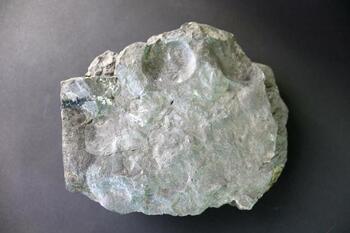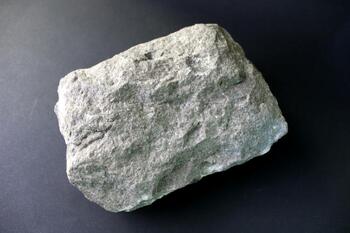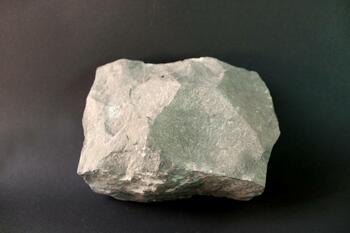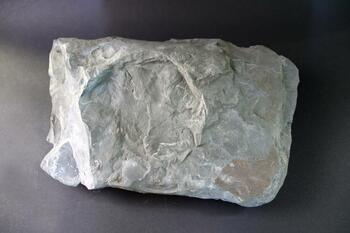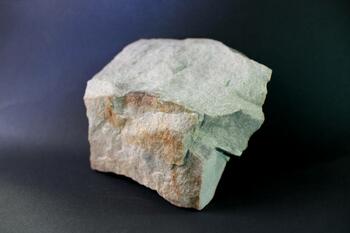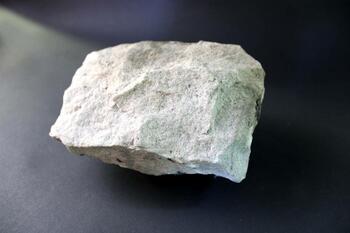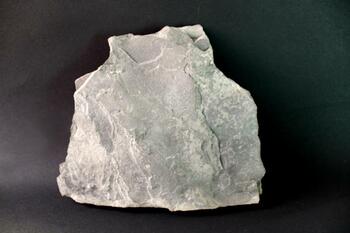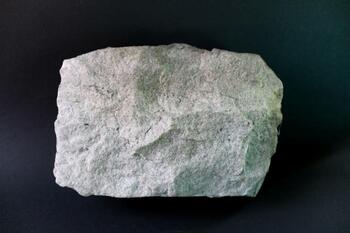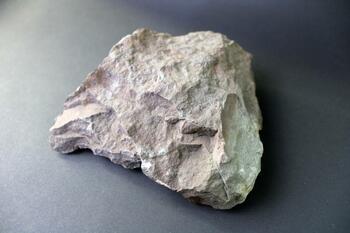The geology of the Niagara region dates to the Silurian Period (about 440 million years ago) when the area lay under a shallow warm sea. As occurs with present day water bodies such as the Gulf of Mexico, rivers flowing into this ancient sea carried sand, silt, and clay to be deposited as thick layers of sediment. At the same time lime-rich organic material from the abundant sea life was also accumulating. Over millions of years these materials became compressed into massive layers of sedimentary rocks and ancient reef structures now visible along the Escarpment.
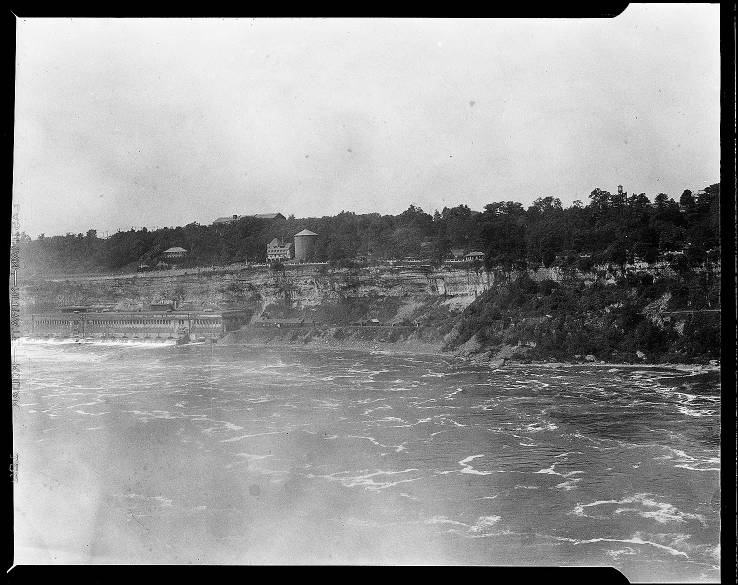
Niagara Falls - Niagara Gorge, ca. 1930-1940
Image Source: Buffalo Museums of Science found in New York Heritage: https://nyheritage.contentdm.oclc.org/digital/collection/BSM001/id/7943/rec/6
Specimen of Rochester shale
This incredibly soft deposit contains lots of trilobites (extinct marine arthropods) that lived until the Permian extinction about 250 million years ago.
Sample of Irondequoit limestone
Limestone is formed from the hard parts of prehistoric marine animals such as corals, mollusks, or plankton.
Sample of Reynales limestone
Brachiopod and crinoid fossils dominate this layer, indicating a shallow-water, marine depositional environment.
Specimen of Neagha shale
The Neagha Shale is a very thin layer (only 6 to 7 feet!) of gray shale, composed of mostly small-grained sediments, such as clay. This environment was low in oxygen and not habitable to most life, so few animal fossils are found.
Specimen of Thorold sandstone
This sandstone layer can be found at the water level at Niagara Falls. The fossils and ripple marks found in this formation indicate a near-shore depositional environment.
Sample of Grimsby sandstone and shale
Where do you find sand? At the beach! Sandstones are often created in beach environments. Shales are made of mud, indicating the presence of mudflats in the ancient environment.
Sample of Power Glen shale and siltstone
You can learn a lot about an ancient environment by looking at rocks. Big grains like pebbles and sand are deposited in high energy environments, while small grains like clay and silt are deposited in low energy environments.
Specimen of Whirlpool sandstone
This white sand rock was deposited in a beach shore environment. It is primarily composed of quartz.
Specimen of Queenston shale
This red shale is some of the oldest rocks exposed in the Niagara Gorge. It was laid down over 440 million years ago during the creation of the Taconic Mountains in modern day New England and New York.
